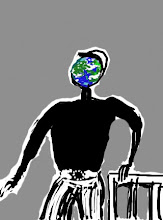I'm now wondering if there isn't a fundamental friction that generates heat, or a metaphorical unpleasant scraping noise, at the formal level of the Faerie Queene's text. To take an opbvious example from book 1. The Red Crosse Knight and his lady Una are crossing a plain. He is handsome and therefore virtuous. She is beautiful and therefore virtuous. This isn’t the way things work in our world, of course. Here external appearance and inner virtue have no intrinsic connection—although, of course, the belief that there is some such connection had deep socio-cultural roots and has had a massively pernicious effect on human happiness (was it really as late as the 1960s that Martin Luther King declared he wanted his childrens’ world to be a place in which people were judged not by the colour of their skin but by the content of their character? Was that really so revolutionary a thing to say?). I don’t meant to be faux-naif. The relationship between appearance and worth, as others’ judge these things, is complex and compromised, of course. But the fundamental point is one we all understand: in our world ugly people can be virtuous, and beautiful people wicked, just as it can sometimes be vice versa. The crucial question, naturally, is how we judge these things. To get it wrong is to fall into the clutches of error.
But to go back to Book 1: the first adventure of The Red Crosse Knight is the encounter with the monster called Error. Subsequent adventures happen under a different representational logic. Error looks wicked and is wicked. Archimago is wicked, but looks virtuous; and from him, and his diabolic part, the narrative bifurcates into a plotty thicket of ur-Jungian doubles: the virtuous knight and the virtuous-seeming (but wicked) woman; the beautiful-virtuous Una, the beautiful-virtuous-seeming (but wicked) Una-simulacrum, and the beautiful-virtuous-seeming (but wicked) Fidessa/Duessa. And so on.
How can we tell that these latter are not what they seem? Fradubio believed Duessa’s beauty was an index of her virtue, until he saw her bathing herself in herbal essences and noted her horrible physical appearance. From this he deduced that she was evil; as indeed, she is. But this scene conflates two things. One is that Duessa is evil because she was pretending to be something—beautiful—that she was not; that, in other words, Fradubio intuits her wickedness from her duplicity. The other is that Duessa is wicked because she is ‘really’ ugly. The former has, as a moral lesson, some purchase in the real world; the latter operates only in the realm of the text.
Another way of articulating this point would be to say, that the FQ needs to function both according to its interior imaginative logic (what SFF calls 'its worldbuilding' and according to the actual moral and practical logics of the real world, where we all live (or else it teaches us nothing, and becomes a barren exercise). But something deep in Spenser's textual strategy puts these two things entirely at odds with one another.
Wednesday, 22 June 2011
Subscribe to:
Post Comments (Atom)

No comments:
Post a Comment